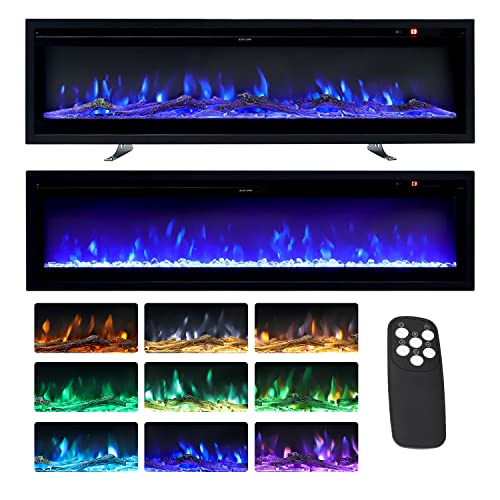Twenty Myths About Wall Mounted Fireplace: Busted
Wall Mounted Fireplaces: The Modern Touch to Home Comfort
Recently, wall-mounted fireplaces have surged in appeal, becoming a stylish and practical addition to modern homes. These ingenious heating services integrate aesthetic appeal with useful functionality, providing heat and ambiance without the need for traditional floor space-consuming fireplaces. This article explores the various elements of wall-mounted fireplaces, including their types, functions, setup processes, benefits, and some regularly asked concerns.
Comprehending Wall Mounted Fireplaces
Wall-mounted fireplaces, also called wall-hanging or electric sconces, can act as a stunning centerpiece in any space. They can operate on electricity, gas, or biofuel, making them flexible for various living areas.
Kinds Of Wall Mounted Fireplaces
When selecting a wall-mounted fireplace, it's vital to comprehend the different types readily available, as each has unique features and benefits. Below is a breakdown of the most typical types:
Type
Description
Pros
Cons
Electric
Uses electrical energy to produce practical flame impressions.
Easy installation, no venting required, safe to use
Restricted heat output, depending on electrical power
Gas
Burns natural gas or lp for a genuine flame.
Efficient heating, appealing looks
Requires setup of gas lines, venting
Bioethanol
Uses eco-friendly biofuel that burns cleanly and produces no smoke.
Eco-friendly, no flue required, fantastic designs
Limited heat output, fuel level monitoring required
Wood-Burning
A conventional choice that burns wood logs.
Generates significant warmth, appealing to purists
Requires flue/ventilation, more upkeep
Benefits of Wall Mounted Fireplaces
Wall-mounted fireplaces provide a number of advantages that make them significantly attractive for house owners and tenants alike:
Space-Saving Design: Ideal for smaller sized spaces, these fireplaces do not inhabit floor area, allowing for better room style and design versatility.
Easy Installation: Unlike conventional fireplaces, these can be mounted on walls without extensive restoration. Lots of electric models simply plug into existing outlets.
Aesthetic Appeal: These fireplaces are offered in numerous designs and surfaces, permitting personalization and matching with home decoration.
Effectiveness: Electric and gas designs can effectively heat up a space while using less energy, frequently leading to lower energy expenses.
Eco-friendly Options: Bioethanol alternatives supply a sustainable heating service with minimal ecological impact.
Security Features: Many contemporary wall-mounted fireplaces come geared up with safety functions, such as automated shut-offs and cool-to-touch exteriors.
Installation Process
Installing a wall-mounted fireplace can be an uncomplicated procedure, particularly for electric models. Nevertheless, it's necessary to follow specific guidelines for a safe and reliable setup.
General Steps for Installation
Pick the Right Location: Ensure the selected wall can support the weight of the fireplace. It ought to be positioned far from combustible products.
Read the Manufacturer's Instructions: Each model will have particular setup requirements; it's necessary to understand them totally.
Level the Mounting Bracket: Use a level to position the fireplace anchoring bracket properly.
Protect the Bracket: Properly install the bracket using screws and wall anchors to guarantee stability.
Hang the Fireplace: Carefully mount the fireplace onto the bracket, ensuring it is securely fastened.
Link the Power Source: For electric models, follow the standards for linking the unit to the power source, making sure safety measures are in place.
Examine for Functionality: Once installed, check the fireplace to ensure it operates correctly and securely.
Upkeep and Care
Keeping wall-mounted fireplaces is reasonably easy, however routine care can boost longevity and performance. Here are some maintenance ideas:
- Clean glass and surface areas frequently to avoid soot or dust accumulation.
- Inspect the heating aspects occasionally (for electric models) to make sure maximum efficiency.
- Check gas lines and connections (for gas designs) for leakages or damages.
- Consider annual expert inspections if applicable (especially for gas and wood-burning fireplaces).
Regularly Asked Questions
1. Are wall-mounted fireplaces safe to utilize?
Yes, wall-mounted fireplaces are typically safe when set up and utilized according to the producer's instructions. clicking here have safety features to avoid overheating.
2. Do wall-mounted fireplaces need a chimney?
The majority of electric and bioethanol fireplaces do not require a chimney. Nevertheless, gas models may require venting, depending upon their setup specs.
3. Can wall-mounted fireplaces heat big spaces?
While some electric designs can offer heat effectively, they are generally more matched for smaller sized to medium-sized spaces. For bigger areas, gas or wood-burning designs might be more efficient.
4. How much do wall-mounted fireplaces cost?
The expense can vary substantially based upon the type and brand, ranging anywhere from ₤ 200 for electric models to several thousand dollars for high-end gas or customized units.
5. Can I set up a wall-mounted fireplace myself?
Lots of electric models are designed for diy installation. Conversely, gas and wood-burning versions typically require expert installation due to safety factors to consider.
Wall-mounted fireplaces represent a contemporary approach to home heating and design, offering a myriad of alternatives customized to numerous styles and requirements. Their space-saving design, ease of use, and aesthetic appeal have made them a popular choice amongst homeowners wanting to boost their living spaces. With cautious selection, professional setup, and routine maintenance, these fireplaces can supply a cozy, trendy ambiance for many years to come. Whether you prefer the flicker of an electric flame or the warmth of a gas fireplace, a wall-mounted fireplace is unquestionably a beneficial financial investment for any home.
